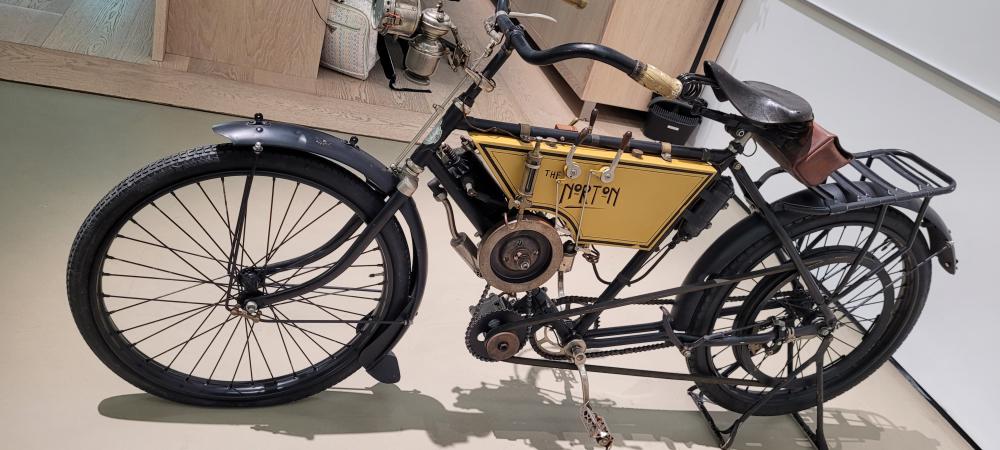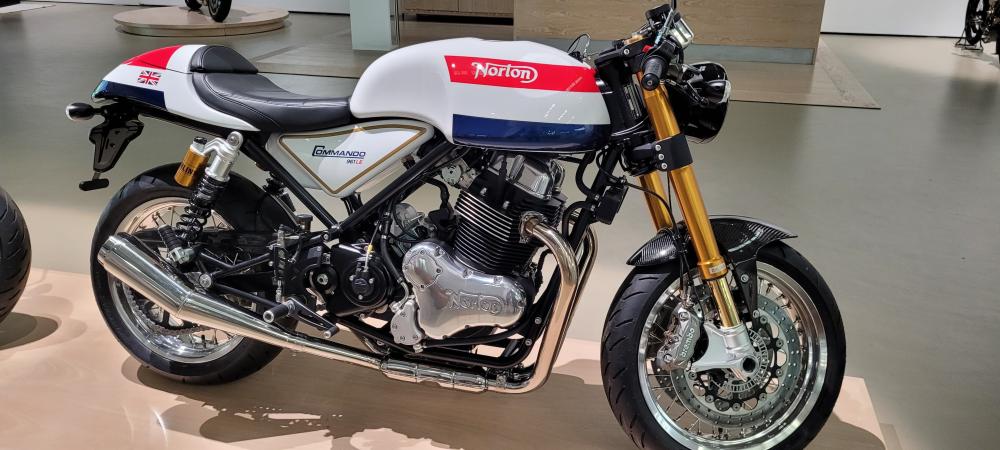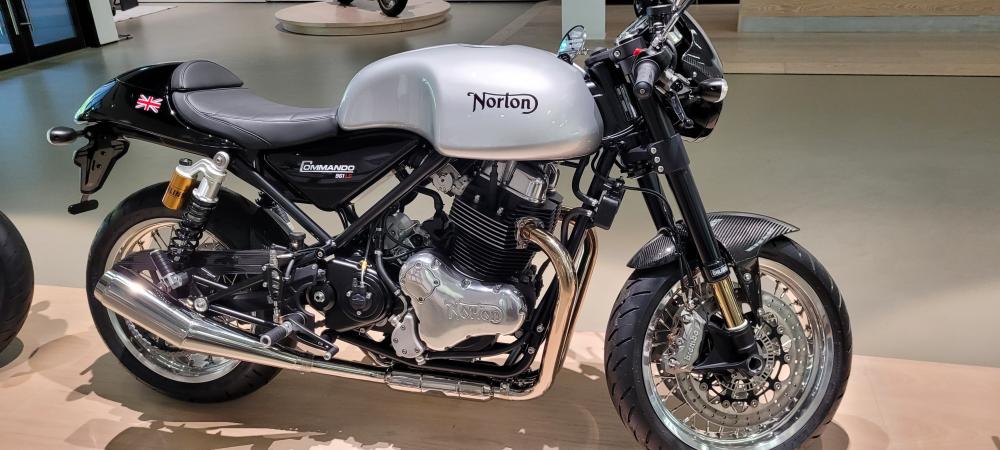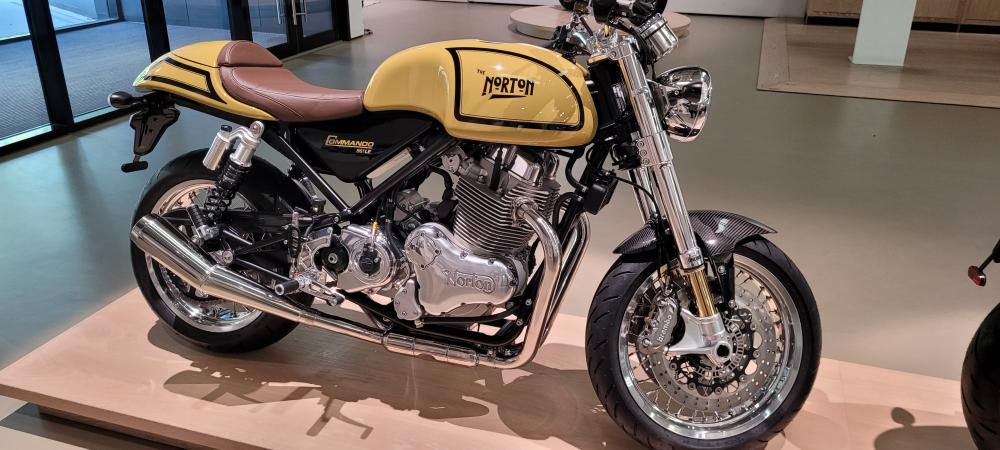A review of correspondence from NOC-L
Some details about Roadholder forks, how to alter the damping characteristics
and views on fork oil vs. automatic transmission fluid
FAQ - Roadholder fork dimensions
Although many parts of the various versions of the Roadholder fork are interchangeable, one major difference between them, and a constant cause of incorrect sourcing, is the fork stanchion length:-
| TYPE | FITTED TO | LENGTH |
| Manx | 20.375" | |
| Short Roadholder | 21.843" | |
| Long Roadholder | 23.312" | |
| Commando | 23.161" |
FAQ - Roadholder fork yokes
| YOKE | FITTED TO |
| 7" | |
| 7.3/8" |
Some Roadholder fork Part. Nos.
Short Roadholder forks were pre- Featherbed; for example, Norton fitted them on the Nomad. When production moved to the Matchless factory, these parts (or rather, design) started appearing on the G/N15CS for the 1964-65 model year. Damper parts, springs and stanchions were adopted from the 1963 Matchless G80CS forks in modified form, thus different from the Roadster range - a fact often overlooked. For 1966 costs had to be slashed further, and the offroad models took to many Roadster parts (see below). The parts you need in order to fit long Roadholders with external springs, are as per 1964-65 G/N15CS:-
| 30457 | Tube, main | 2 off | 23¼" long |
| 30440 | Damper, tube | 2 off | |
| 17357 | Rod, damper | 2 off | as per 1963 Matchless forks |
| 10721 | Peg, locating damp. | 2 off | as per 1963 Matchless forks |
| 16304 | Cup, valve, damper | 2 off | as per 1963 Matchless forks |
| 10719 | Damper valve | 2 off | as per 1963 Matchless forks |
| Nut, rod | 2 off | as per 1963 Matchless forks | |
| 16072 | Sleeve, damper | 2 off | as per 1963 Matchless forks |
| 16339 | Clip, sleeve | 2 off | as per 1963 Matchless forks |
| 30446 | Bolt,top,main tube | 2 off | |
| 30456 | Nut,bush retaining | 2 off | 'hollow bolt' as cited |
| T1090 | Washer, b.r. nut | 2 off | 'keyed washer' as cited |
| 21789 | Spring, main | 2 off | external springs, Matchless ** |
| 21785 | Washer, cover tube | 2 off | leather, external springs, Matchless |
| 30041 | Cover tube, top | 2 off | if solid covers are fitted |
| 30453 | Extension, slider | 2 off | if solid covers are fitted |
| 30531 | Cover tube, top | 2 off | if gaiters are fitted |
| 30453 | Extension, slider | 2 off | if gaiters are fitted |
| 20463 | Gaiters | 2 off | if gaiters are fitted |
| ** if 1966-69 G/N15CS main tubes (25" long) are fitted, other dampers (030037) and main springs (030532) need to be used; many other parts are as per the Roadster setup | |||
Most of these parts are available and Matchless fork parts are plentiful as well (ask Russell Motors). I believe stanchions are available from Fair Spares under part no. 06-3423PF for pre-Featherbed models but as noted, the bush retaining design may be slightly different compared to the pre-Featherbed set-up; 030446 and 030457 numbers suggest a Matchless redesign. A number of other parts which these forks had in common with Roadster forks have not been listed.
Knut Soensteby (knut.sonsteby@lhg.hib.no) on NOC-L 22nd. May 1997
Altering fork damping characteristics
Compression damping on Roadholder forks is controlled by the two holes at the bottom of the damper tube. To increase compression damping, the holes can be welded up and drilled smaller. To decrease damping, drill the original holes larger. Firstly, make sure the damper piston to tube clearance is not excessive due to worn parts. There are no holes at the top of damper tube for rebound damping, but damping is controlled by fit of the alloy damper tube cap on the damper rod and again the piston to tube clearance. The cap is usually worn out if the forks have not received regular fluid changes and become water contaminated. The water then rusts the damper rod which becomes sort of a file and enlarges the cap's inner diameter. I don't think anything can be done to increase rebound damping other than using heavier weight fork oil and ensuring that the damper tube cap is in good condition.
Gary Slabaugh (gdslabaugh@sprintmail.com) on NOC-L 22nd. May 1997
Altering fork damping characteristics - a reference
I remember reading about a modification to Roadholders that involved welding up and redrilling the holes in the tube. This was in a thick photocopied digest that a buddy picked up at the Norton Rally at Taho Nevada in 1991, I think. Anyway, I recently bought the Tech. Digest and couldn't find the article. The instructions in the mystery article were quite detailed and explicit (a series of holes decreasing in size and all that; it even gave hole diameters).
Thomas Allen (thomasa@halcyon.com) on NOC-L 27th. May 1997
Higher vs. lower viscosity fork oil
As you may have noted, Norton commando reference material(s) suggest several grades, viscosities, and types of oil may be used for the front forks. I believe that the key things to consider are the expected service (i.e. severe front brake use and exhaust grinding turns versus normal street use - whatever that may mean), and the riders preference.
Naturally, the higher viscosity oils will provide greater rebound damping. On the Commando I road race, I started with a generic 20 weight oil. As my riding skills improved, I found that the front wheel would begin to patter a bit in some turns, and under hard braking, the front wheel would also tend to skip and lock up. After increasing the fork oil viscosity to 30 weight and slightly increasing the spring preload, the pattering and skipping seems to have ceased - for now.
I have used off-the-shelf fork oils. Since the change of front fork oil is not too difficult on the Commando, I suggest that you may want to experiment and find the 'type' oil that is suitable for you.
John Magyar (wimcjjm@aol.com) on NOC-L 19th. May 1998
Bel-Ray shock oil
If you replace your stock springs with Progressive Suspension springs, there is a big difference right there. I like Bel-Ray shock oil.
Thomas W. Kullen (utahnorton@sisna.com) on NOC-L 19th. May 1998
Use standard oil as recommended
I prefer using fork oil; I think ATF is too light for Norton forks. It might work well in a late model machine but for Norton forks I think not.
John Ebert (jmebert@worldnet.att.net) on NOC-L 20th. May 1998
Modify the damper tubes and use more fork oil than recommended
I race a Commando and discovered the shortcoming of Roadholder forks. Although most references say to fill with 150cc of oil, this usually still leaves some air in the top of the damper tube, and results in the forks 'topping out' on the rebound. Try between 175 and 200cc per leg. If you want to get more accurate, pull one leg apart and refit the damper tube/rod without the stanchion. Measure how much oil is needed to cover the top of the damper tube. This is a maximum, as the stanchion will displace some oil when re-fitted.
The biggest problem is pattering through corners. This seems to be from the lack of compression damping in the design - they rely on oil passing through the large holes at the bottom of the damper tube. I have fitted some shells inside my damper tubes that block the exit holes on the compression stroke and uncover them on the rebound stroke. This means that on the compression stroke, the oil can only exit past the small clearance gap between the damper rod and the alloy damper cap, i.e. compression damping! I currently use 7.5 weight fork oil like Jap bikes. The system works well on undulations and acts as an anti-dive under brakes. I'm still working on a high-pressure bleed mechanism for fast sharp bumps - they're still coming through to the bars.
Geoff Haines (ghaines@jands.com.au) on NOC-L 20th. May 1998





